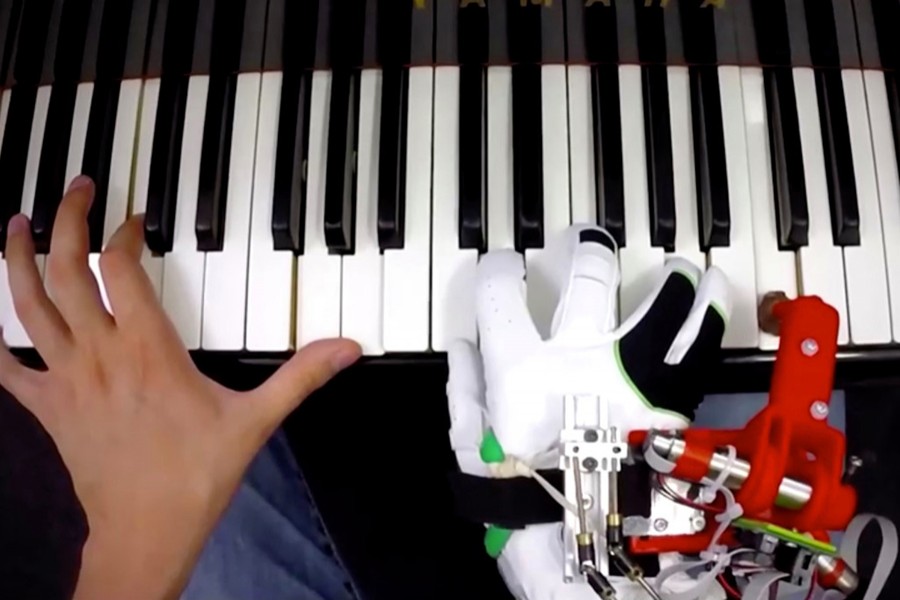How would pianists cope with suddenly having two thumbs on one hand? Would their brains become scrambled or would the extra digit add a new dimension to their playing?
Neuroscientist Adlo Faisal and the team he heads at Imperial College London developed a robot thumb to find out, reports Reuters.
Within an hour of being fitted with the artificial digit next to the little finger of their right hand, six players had learned to integrate it on the keyboard, steered by electrical signals generated when they move their foot.
"It came out of my own passion for piano that I wondered what happens if I have an extra finger?" Faisal, Professor of Artificial Intelligence and Neuroscience at the college's Department of Bioengineering and Department of Computing, told Reuters.
"There's a dedicated area of your brain responsible for every single finger," he said.
"So now comes the question, if I give you an eleventh finger, ... are you processing it the same way as you're processing a regular limb?"
Researchers at the Brain & Behaviour Lab that Faisal heads found that, regardless of playing ability, the six pianists and six other non-playing volunteers all adapted to the thumb quickly, suggesting we are not limited to using an extra digit for tasks we are familiar with.
"The fact that you can actually play with eleven fingers is not entirely trivial and that has to do with how your brain is actually wired up…," Faisal said.
"So what we can say is it's a proof of existence. We can do it. So the next challenge would be can we do two thumbs, so 12-fingered? Can we do something else?"


